Apples – they’re considered a staple fruit in many diets around the world, and with thousands of varieties to choose from, they offer a rich complexity of flavors that’s as diverse as nature itself. From its wild roots to carefully cultivated varieties, each apple carries a tantalizing array of tastes, textures, and aromas – all meticulously shaped by a fascinating interplay of science and history. This exploration delves into the wild roots of the apple and tracing its history, the science that shapes its taste, the varietal differences that distinguish each bite, the palatable pairings they inspire, and the global cultural perceptions surrounding this iconic fruit.
History of Apple’s Flavor
A Delectable Journey: The Historical Savors of the Apple
Food is a tapestry of culture, history, and nature, woven together by the threads of humankind’s love for flavor and nourishment. This love is most evident in our relationship with one of the most ubiquitous and delicious fruits, the apple. From its humble beginnings in the mountains of central Asia to the diverse varieties we feast on today, the apple’s story is one steeped in centuries of evolution, exploration, and understandably, our constant craving for elegance in taste.
The wild ancestors of the beloved apple, Malus sieversii, are still found today in Kazakhstan, where sweet and tart varieties hang from the branches, bearing testament to a legacy that spans millennia. The flavor of these ancestral apples was far from the refined sweetness we are accustomed to, showcasing a tartness that would have certainly left a strong impression.
The journey of the apple is intertwined with the beginnings of agriculture itself, as humans began to selectively breed these wild apples for their desirable traits. Through the process of domestication, the biting tartness of the wild apple was gradually tempered to give a balance of sugar and acidity that endears the apple to many a palate.
By 2000 BCE, apples had made their way to the fertile crescent, aided by traders and travelers on the Silk Road. Here, its intermingling with local apple varieties gave birth to an exciting community of flavors – the ancestors of the varieties we now relish.
As the centuries turned, the apple spread across continents with the help of humans on the move. Whether cultured Romans, Viking sailors, or American pioneers, everyone carried apple seeds in their pockets (some even in their cheeks) to plant in their new homes. Each new land shaped the apple’s flavor, with the; climate, soil, and local tastes playing crucial roles.
The mid-19th century saw apple cultivation receive a further boost with the science of grafting. Resulting in apples with identical taste and appearance to their parent, such as the well-loved Granny Smith or Honeycrisp, the flavors of the apple began to consolidate. Meanwhile, naturally occurring cross-pollinations continued to produce strikingly new varieties, ensuring the apple never lost its element of surprise.
In more recent times, advancements in food science and cross-breeding efforts have ushered in a new era of flavor explosion, from heirloom varieties to the ultra-sweet like ‘Fuji.’ These endeavours have opened up an astounding palette of flavors for modern food lovers.
Today, we have over 7,500 known apple varieties worldwide, each with its unique flavor profile – a splendid combination of sweet, sour, bitter, and even umami. It’s simply breathtaking to think that every bite ties us back to an apple tree somewhere in central Asia, making us part of a narrative that transcends geography and time.
The apple, with its smorgasbord of flavors, serves as an emblem of our shared human endeavor towards enjoying good food. Be it a revitalizing crunch in a salad, folded into a lovingly baked pie or being munched outright, apples continue to serve as a timeless staple in our culinary repertoire. So next time you enjoy an apple, remember this, the luscious flavor you savor is the result of nature’s bounty, human innovation, and an adventure through our vibrant history.
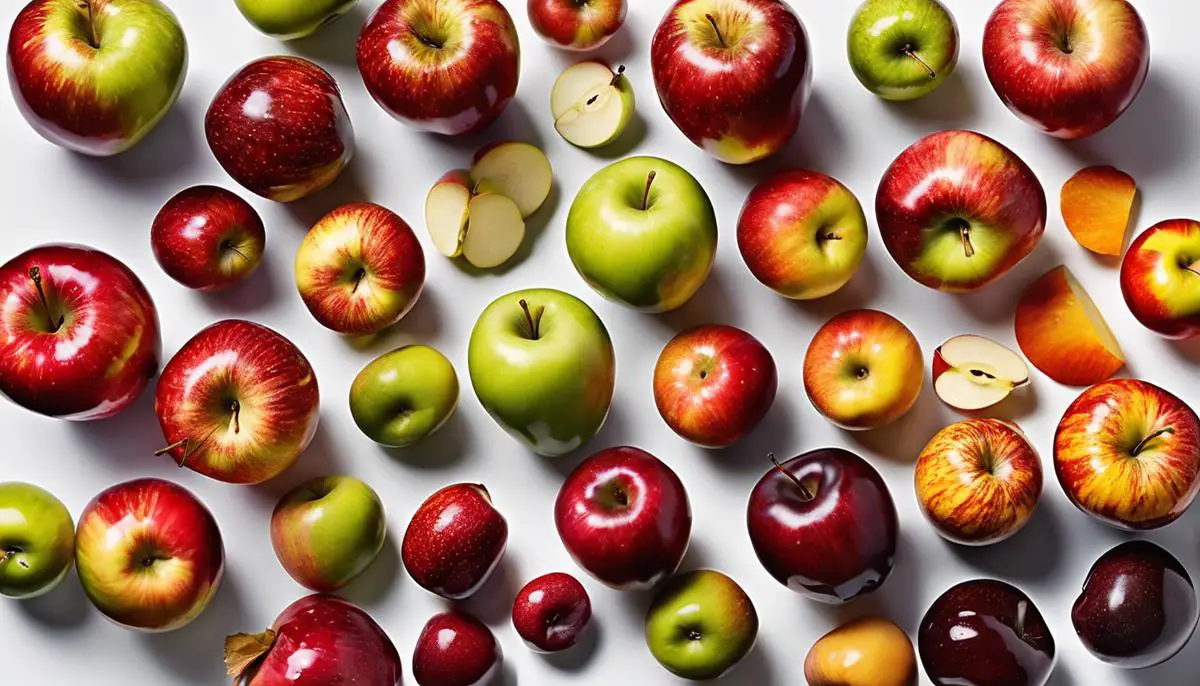
The Science Behind Apple’s Taste
Unveiling the Science Behind the Taste of an Apple
With a rich history firmly rooted in human evolution, apples have embellished our cultural canvas, inspired art, signified knowledge, and tantalized our taste buds. Leading us down the Silk Road through Central Asia, we’ve journeyed through the fascinating origins of apples, understanding their cultivation, miracle of grafting, and the remarkable play of nature and science in birthing about 7,500 unique apple varieties worldwide. But one question lingers- why does an apple taste the way it does? The answer lies in the realm of chemistry and biology, in the synergistic meeting of organic compounds, sour acids, sugar content, and aroma volatility.
Deconstructing the Apple: Composition for Taste
No matter the variety, every apple is a treasure trove of three fundamental elements that determine its flavor: sugars, acids, and aroma compounds.
Let’s time travel to our primary school science lessons: remember the phrase “all sugars are not created equal?” That’s exactly what gives a Fuji apple its iconic sweetness or a Granny Smith its delightful tartness. The presence of distinct simple sugars, namely fructose, glucose, and sucrose, attribute to the fruit’s inherent sweetness while allowing a subtle variance in taste from one breed to another.
Acids take center stage in the theater of taste too; malic acid being the star performer in apples. This acid orchestrates the sour tang that subtly dances with the natural sugars, creating a palate palette that ranges from sweet and mellow to sharp and zesty.
However, sugars and acids are mere foot soldiers in the army of taste. The real generals are the aroma compounds. Present in microscopic amounts, these volatile organic compounds give an apple its trademark smell, playing a defining role in taste perception.
Taste Perception: More Than A Piece of the Pie
Food is an adventure for all the senses, with smell and taste taking the lead. Our noses can identify over a trillion distinct scents, while our taste buds are limited to only five recognized flavors. This is where our olfactory system takes a bow, enhancing our gastronomic experience by blending aromas with tastes.
Apples come loaded with at least 100 different aroma compounds. These volatile substances are released as apple’s skin is broken, either by cutting or biting, filling your nasal passage with a delightful aroma that mixes with your sense of taste to create the apple’s flavor profile.
However, the characteristic taste of an apple doesn’t stop at the interplay of sugars, acids, and aroma compounds. Elements like texture and juiciness also play their parts. The varieties in firmness, the presence of air pockets in an apple’s cellular structure, contribute to its mouthfeel and consequently, its flavor.
The Magic of The Apple Bite
The moment your teeth sink into an apple, you are not merely eating; you’re acting as a living chemistry lab. Your bite breaks open the cells, and the enzymes meet the air, triggering oxidation. This oxidation contributes to further flavor development, explaining why cut apples taste slightly different from freshly bitten ones.
For something as common as an apple, the science behind why it tastes the way it does, is quite complex, involving not just biology but also chemistry, and even physics. To underscore this phenomenon, one might say that every bite of an apple is not just a tasty experience, but a testament to the sophistication of nature’s design. So next time you enjoy an apple, pause for a bit and marvel at the miracles of science that make your simple, everyday fruit such a sensory spectacle.
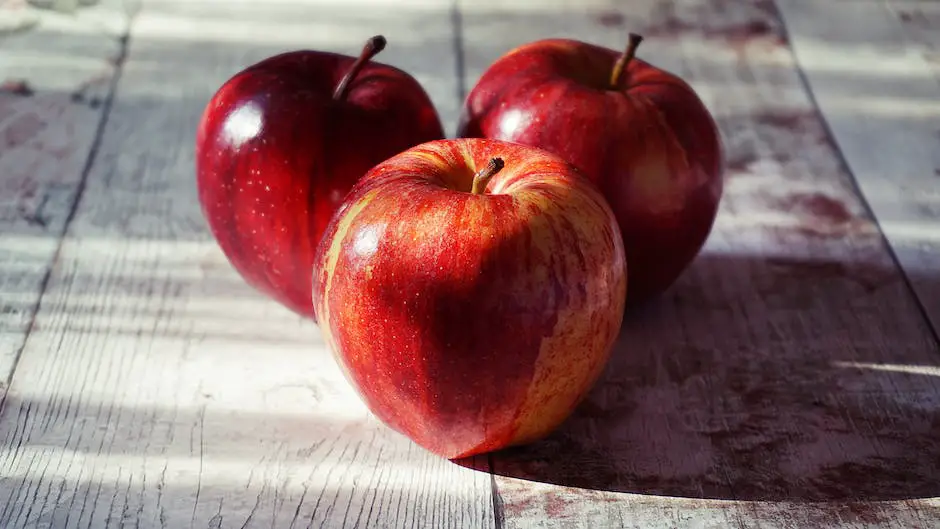
Varietal Differences in Apples
Diving into the realm of apple flavors, we find that the varietal of an apple has a deep influence on its taste. While past discussions have elucidated factors like origin, cultivation, cross-breeding, and the science behind taste, the focus now shifts to how the specific variety carves out each apple’s distinctive taste profile.
Just as humans possess unique characteristics, every apple variety has a blend of properties that define its taste. Different types of sugar like fructose, glucose, and sucrose each deliver a sweet flavor but their levels vary depending on the apple variety. For instance, an abundance of fructose gives Fuji apples their characteristic super-sweet flavor.
Equally instrumental in shaping taste profiles are acids, ranging from malic to tartaric to citric. The iconic tartness of Granny Smiths comes from a proportionally higher malic acid content. This tangy zing is what makes these apples ideal for a culinary delight like apple pies.
Diverse aroma compounds are the unsung heroes that refine apple flavors. While the olfactory system plays its part in taste perception, these aroma compounds released when an apple is bitten or cut further enhance the flavor experience. For instance, Golden Delicious apples emit ethyl butyrate, imparting a fuller, richer taste.
A remarkable facet that contributes to an apple’s taste is texture. The architecture of cells within the apple dictates its crispness and juiciness. Honeycrisp apples offer a satisfying crunch due to their larger cells that shatter more readily, while a softer McIntosh apple’s smaller cells lend it a more melt-in-the-mouth texture.
Effectively, an apple’s flavor is far more than just an interplay of sweetness and tartness. It’s an intricately choreographed dance of sugars, acids, aroma compounds, cell structure, even minute changes occurring as an apple is cut, bitten, or simply exposed to oxygen. To mark the end results as merely sweet, tart, or crunchy would be an egregious understatement.
Diverse apple varieties offer a smorgasbord of taste experiences, each unique and delightful in the sensorial symphony they compose. Indeed, the apple varietal wields the baton in this taste orchestra – crafting, refining, and tuning the final flavor melody. So the next time you sink your teeth into a juicy apple, take a moment. Beyond the crunch and the juice, there’s a language of taste, ancient and scientific, waiting to be savored.
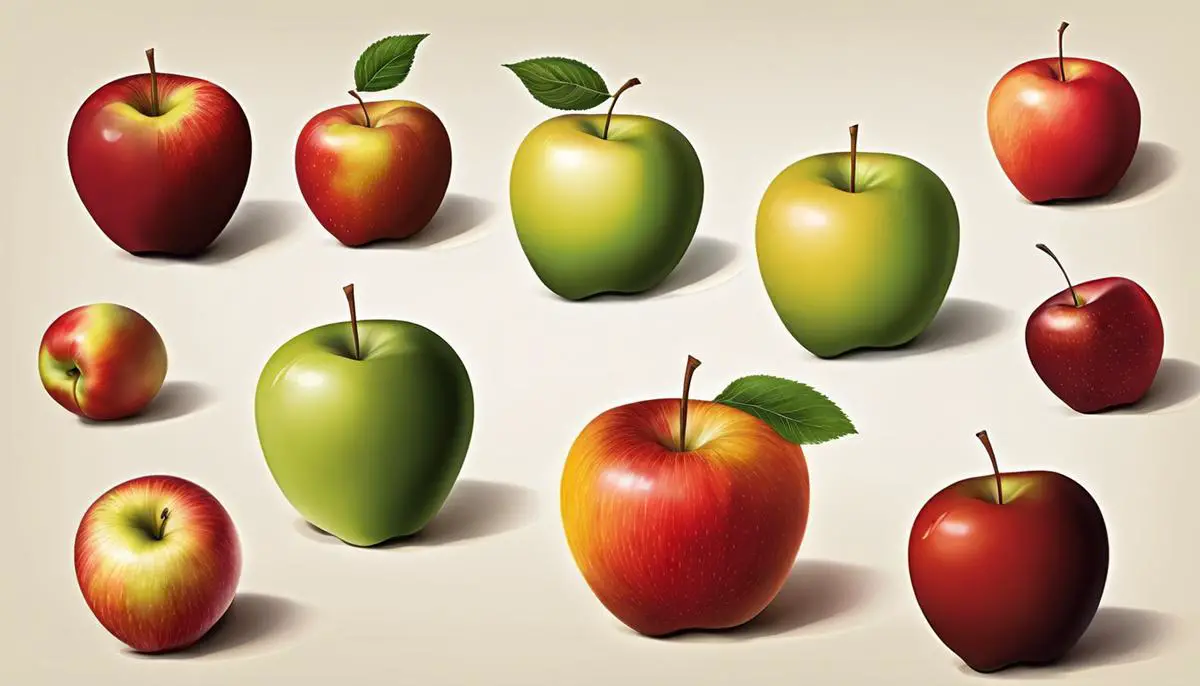
Apple Pairings and Recipe Suggestions
Indulging in apple-savoriness requires an intricate layering of flavors to enhance and compliment the fruit’s natural tang. Apple pairing and creative recipe suggestions are nothing less than gastronomy – a delightful culinary journey for every food enthusiast.
Apples are remarkably versatile. Their aroma, balanced sweetness, and acidity make them ideal partners in dishes, lending a delightful punch of taste and texture. Cheese and apples are a classic pairing. Sweet and crunchy apples like Honeycrisp and Braeburn are divine when paired with robust flavors of aged gouda or sharp cheddar. This combination is an incredible appetizer or a delicious conclusion to a meal.
Simultaneously, the tartness of Granny Smith apples cuts through the richness of Brie cheese. They balance the creaminess and ooze of the cheese with their intense sourness – a parade of sophisticated flavors on the taste buds.
Affixing the aphorism “opposites attract” to food pairings, one cannot overlook pork and apple. The succulent, savory pork contrasts and harmonizes so beautifully with the tart, slightly sweet profile of apples. Try a scrumptious dish of slow-roasted pork loin with apple compote, an undeniable testament to the culinary alliance between apple and pork.
Sauces and vinaigrettes crafted from apples can elevate your meals. A honeycrisp apple vinaigrette can transform a simple salad into a gourmet one. Apple infused BBQ sauce can give an exciting twist to your grilling adventures. Don’t forget about beverages! Hot apple cider, apple smoothies, or cocktails can be game-changers.
Apples cozy up well with warm spices like cinnamon, nutmeg, and cloves, enhancing their native tart personality. Baked goods laden with such spices and apples like pies, strudels, and crumbles are a universal delight.
One of the fabulous culinary explorations of apple pairings is with seafood. Imagine seared scallops on a bed of pureed Granny Smith apples, or flaky smoked salmon with apple-fennel salad. The rush of tart, crunchy apples against the lusciousness of seafood is a gastronomic marvel worth trying!
Lastly, apples and dry fruits like raisins, walnuts, and almonds share a delightful camaraderie. Sweet, salty, crunchy elements intermingle with the crisp and tart apple flavor, making them a pastry chef’s dream.
Pairing apples or crafting recipes around them is an expression of artistry in the kitchen. Whether added to a savory stew or tucked into a cozy pie, apples bring a versatile, vibrant flavor to the table. So, next time you have apples sitting in your pantry, we invite you to explore not just a fruit, but a potpourri of delightful culinary experiences.
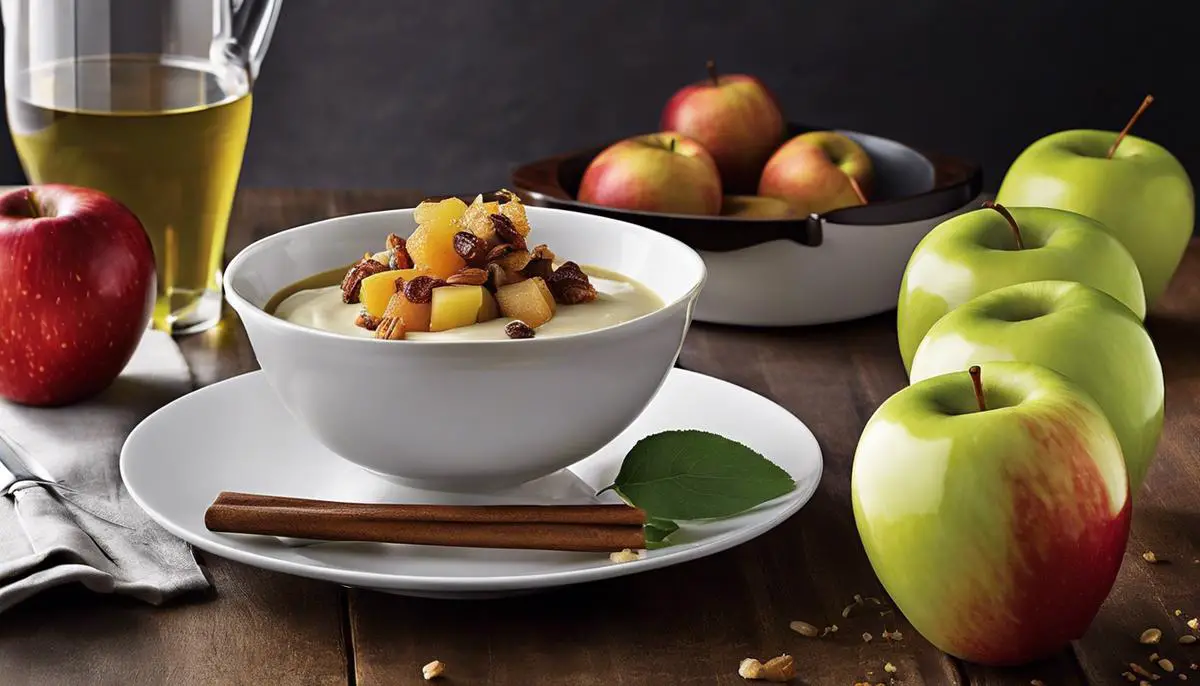
Cultural Impact and Perception of Apple’s Taste
– How the appreciation of apples reflects cultural views on taste
Surely, food is the language that connects us all. It’s a universal love language that makes each culture unique, and yet at the same time, it brings us all together. There’s no better opportunity to explore this global connection than through the humble apple, a fruit enjoyed by many around the world, across continents and cultures.
When we immerse ourselves into a culture, we often try to savor its gastronomic offerings. This same notion rings true with apples. Every bite reveals layers and layers of the land’s history, the local climate, and the cultural preferences influenced by generations of traditions.
What may be a sweet delight for one, could be a tart surprise for another. Cultural context greatly shapes our perception of an apple’s taste. Certainly, taste alters subtly or drastically from one region to another and from one culture to the other due to differences in geographical location and culinary traditions.
In America, the perennial favorite variety is the sweet and slightly tart Red Delicious apple. But halfway across the globe, in Japan, palates might prefer the Fuji apple, renowned for its exquisite sweetness that lingers delightfully on the tongue. Visit France and one will find a fondness for the cider apples, like Calvados, with their intense aromatics and piquant taste that is cherished in the production of their admired apple brandy.
Cultural shifts also influence the perception of an apple’s taste. The rise of gourmet cooking shows and food-oriented social media content has driven today’s palate to become more sophisticated and discerning. We see culinary enthusiasts and even everyday food lovers indulging in heirloom apples like Black Oxford, Roxbury Russet, or the vibrant Pink Pearl, further amplifying our dance with diverse flavors.
Our connections with each other, our traditions, and our land, are profoundly reflected in our food choices. Food not only nourishes our body but also enriches our soul by enabling us to journey across borders, beyond the boundaries of language and race. Our interpretation of an apple’s taste is a testament to our unique cultural backgrounds and shared love for good food.
In conclusion, the humble apple is indeed a testament to our mutual gastronomic journey. It reflects our cultural views on tastes, setting the stage for unique interpretations that are as varied as the cultures we come from. As the apple continues its journey through our kitchens and dining tables, it quietly echoes the symphony of culture’s influence over our perceptions of taste, much like the resonating crunch that fills the air once an apple is bitten into. Food, truly, is a vehicle for unity and understanding – a passport to an authentically shared human experience.
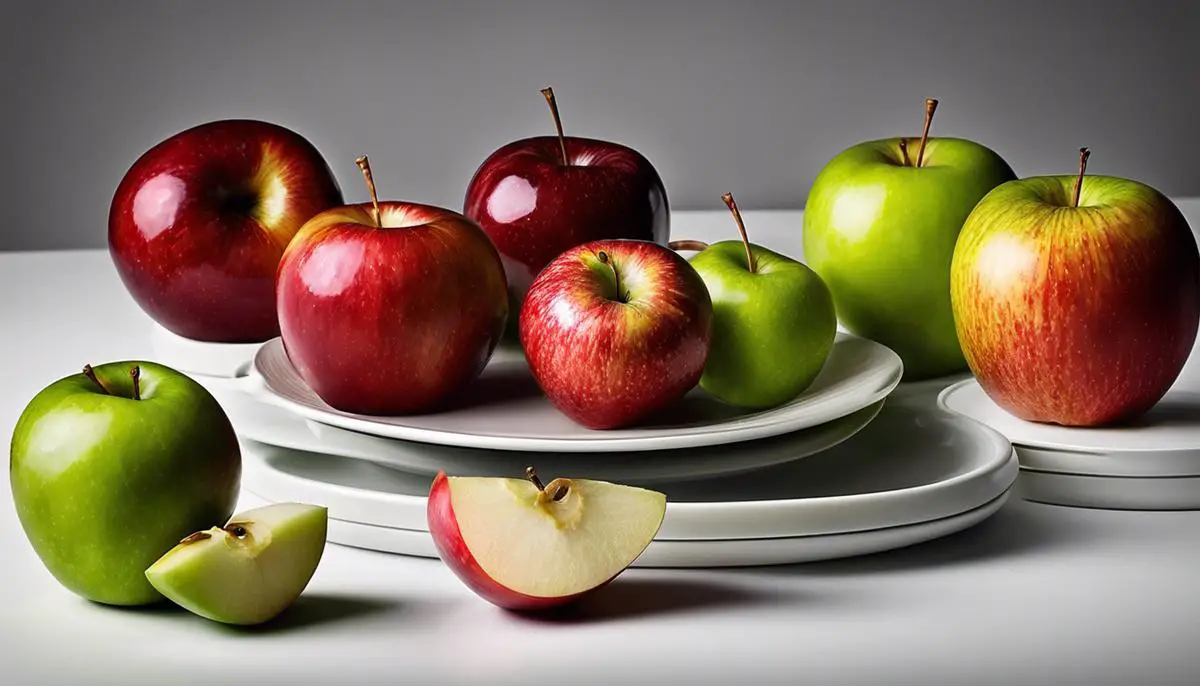
Indeed, the apple’s tale is far from being merely about a fruit; it’s an intricate culinary and cultural journey that invites us to appreciate the beauty of nature’s bounty. The apple’s evolution from its wild ancestors to the many delicious varieties we relish today, its delectable range of flavors wrought from the subtle intricacies of science and geography, the artful dishes it inspires, and the deep cultural impact it holds across the globe – all contribute to the infinite allure bound in a simple bite of an apple. The next time you savor an apple, remember that what you’re tasting isn’t just sweetness or tartness, it’s also a slice of the world’s long-held fascination and love for this humble, yet remarkable fruit.